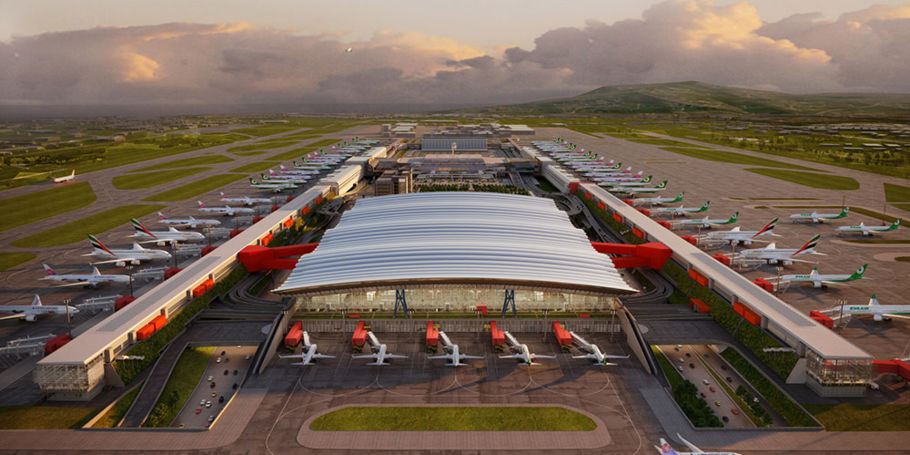Increasing the capacity of San Francisco International's Harvey Milk Terminal
San Francisco International Airport Terminal 1 – The Harvey Milk Terminal
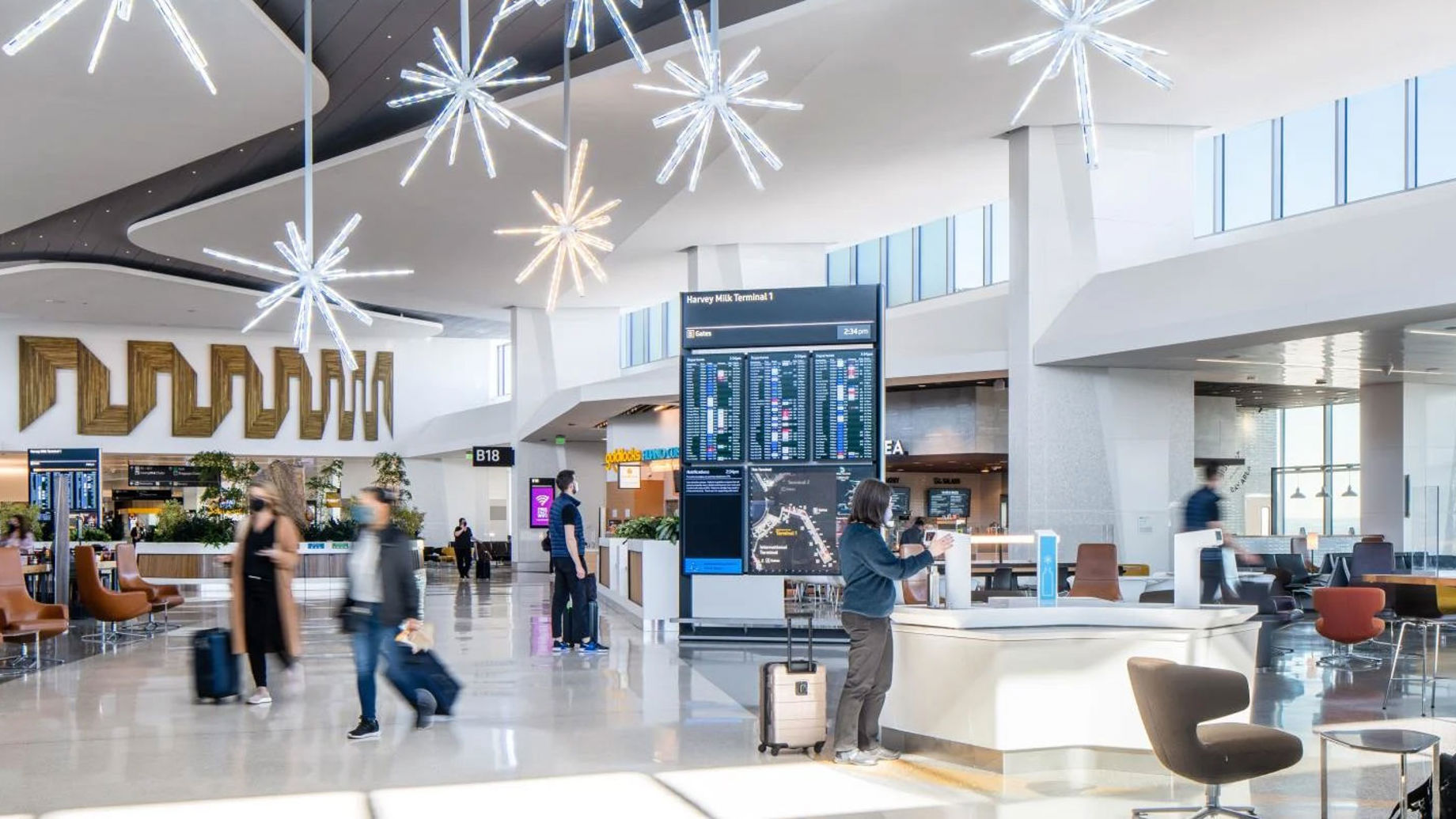
Terminal 1 of San Francisco International Airport (SFO) was built in the early 1960s and despite a rennovation in the 1980s, could no longer cope with the demands of the millions of passengers who pass through annually. To address this, the Terminal 1 Replacement Program was conceived. SFO’s goal was to revolutionize their guest experience, while revising, fostering, and celebrating a modern romance of travel.
Executed by two separate teams, working in close collaboration, these included Boarding Area B (with an Austin-Webcor joint venture as general contractor and a design team led by HKS-Woods Bagot-ED2-KYA joint venture architects) and Terminal 1 Center (with Hensel Phelps as general contractor and a design team led by Gensler-Kuth Ranieri joint venture architects).
As the main engineer on the Boarding Area B design team, Arup was appointed as the primary designer for the airside elements of the project, including aviation planning, civil engineering, and sustainability consulting, in addition to building design services including mechanical, electrical, plumbing, and acoustics/audio-visual.
Arup also acted as the lead airside civil engineer for the project, with responsibility for design of the 30-acre apron and taxiway reconfiguration, which was delivered in multiple stages. We coordinated extensively with the airport’s airside logistics team to maintain operational flexibility during the staged construction, including provision of temporary taxilanes and stands.
Opened in three phases (2019, 2020, and 2021), Boarding Area B is now fully operational with 25 aircraft gates, all in a spacious terminal building with two levels and a mezzanine. The building features expansive passenger waiting rooms, food & beverage and retail concessions, an automated baggage handling system, connections to ground transportation, and new post-security connections to the international terminal, enabling the new facility to handle both domestic and international flights.
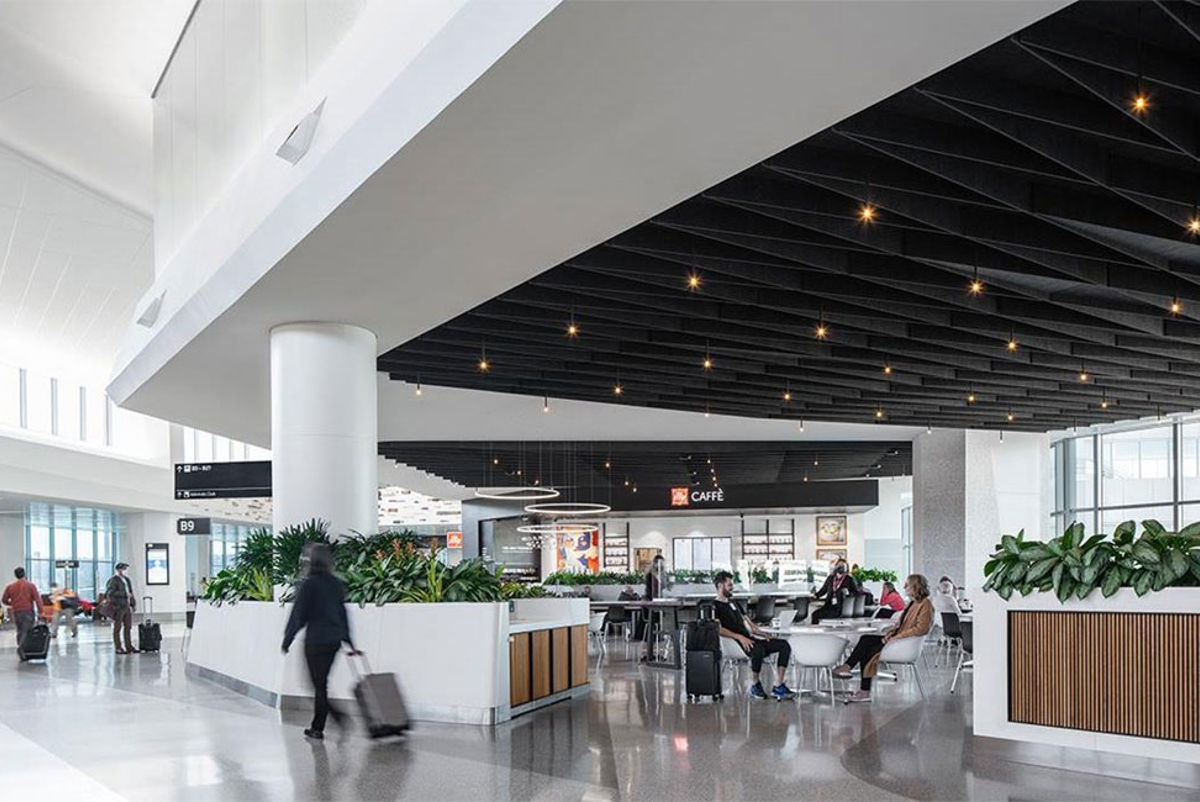
Delivering energy efficiency
Our multidisciplinary teams helped deliver a highly energy-efficient building despite the intense energy uses of a 24/7 airport terminal. From the start of the design, Arup identified two critical areas for reducing energy consumption: the heating and cooling systems, and the baggage handling system. The mechanical system features extensive use of radiant ceilings for heating and cooling, allowing for a smaller and extremely efficient displacement ventilation system. Electrochromic glazing is used throughout the concourse level (with Low-E high performance glazing at the clerestory level) to provide high-quality daylight while reducing glare and heat gain.
The boarding area is partly powered by a 1 MW solar array located on the building’s roof. In addition, an advanced modular baggage handling system – the first of its kind in the United States – uses half the energy of typical belt-type conveyors. Altogether, Harvey Milk Terminal 1’s sustainable design measures helped to achieve over 40% energy savings, ultimately allowing Boarding Area B to achieve LEED v4/4.1 BD+C New Construction Platinum certification, the first airport terminal in the world to do so.
Maintaining operations while making improvements
We collaborated with the design-build contractor to determine a phased approach and construction schedule that maintained aircraft operations and flexibility. Phasing was optimized using temporary remote gates, reconfiguring existing gates, and interim grading solutions. Temporary utilities allowed existing services and system redundancy to be maintained while the permanent facilities were built.
Modern aircraft parking
Our aviation planning specialists developed a new aircraft parking plan that flexibly accommodates a modern aircraft fleet mix, including several two-for-one multi-aircraft ramp system gates sized for A380 aircraft. We worked closely with airline and airport stakeholders, as well as the airport fire department, to fully understand the ramp operation and safety practices from all perspectives.
Boarding Area B now has vehicle service roads both at the tail of stand and head of stand. As head of stand roads are a first for SFO, this represents a quantum shift in thinking and planning for a more efficient ramp operation.
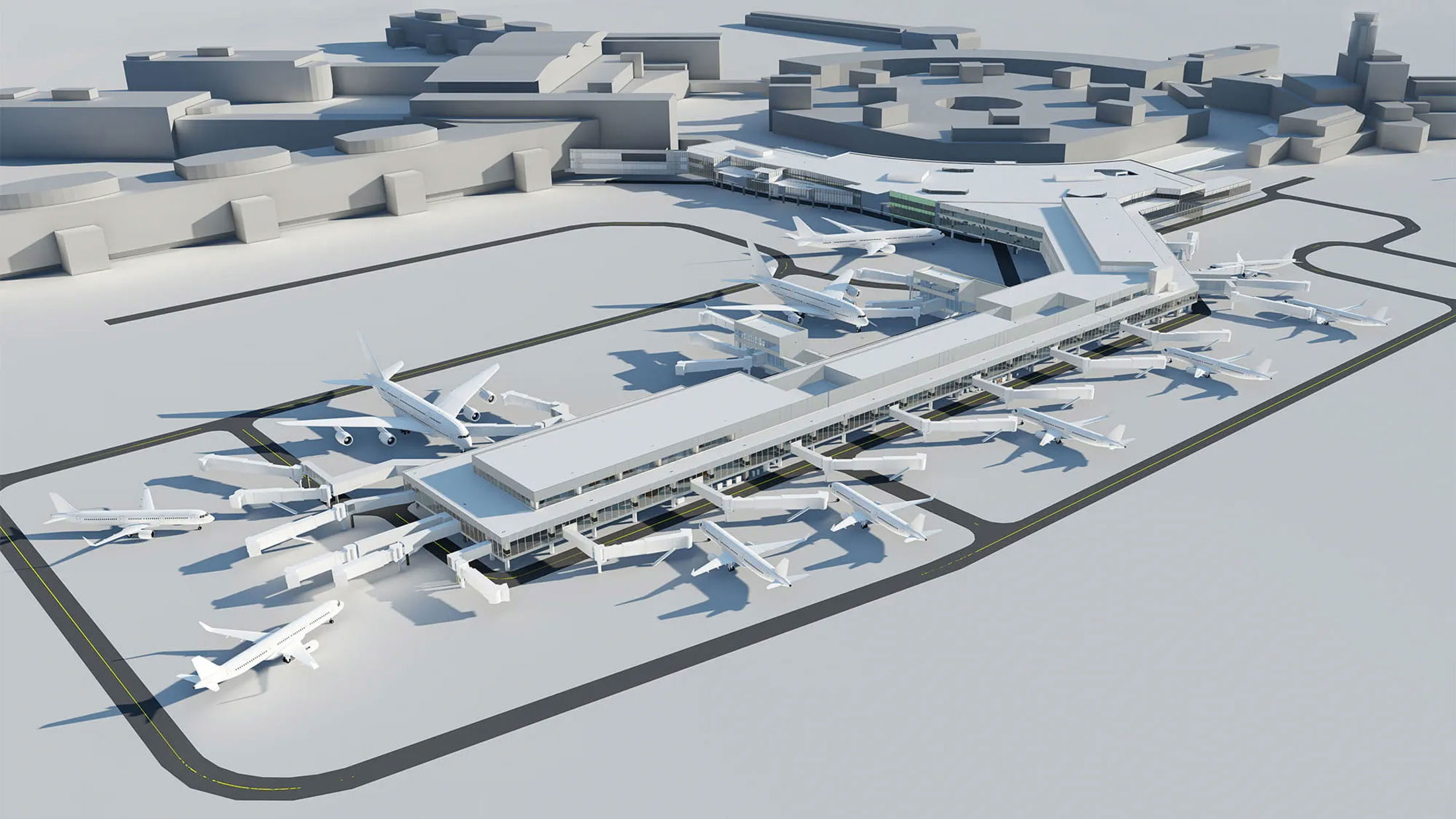
Building with sustainable materials
SFO is committed to protecting global and human health, and Arup worked with the multidisciplinary design team and with the airport’s sustainability leaders to make sure everything from structural materials to floor finishes to unique airport systems met rigorous sustainability criteria. By optimizing the cement content of the structural concrete, we were able to reduce the embodied carbon footprint of the entire building by over 10%. The furniture, carpeting, and wall coverings are all free of the toxic flame retardants routinely added to fabrics.
In a first for the building industry, we obtained an Environmental Product Declaration (EPD) and a Health Product Declaration (HPD) for the passenger boarding bridges — a critical piece of information that allows for the assessment and improvement of the environmental footprint of building components. We also protected occupant health by reviewing all interior materials (within the waterproof membrane) against strict air emissions criteria and selected an outdoor air filtration system to protect passengers as well as airport employees from outdoor air pollutants and jet fuel odor. The key sustainability strategies were vetted with SFO using a triple bottom line (environmental, social, and financial) cost-benefit analysis tool to bring consideration of these strategies’ broader benefits to passengers and the community into the design process.
As part of its strategic plan to reduce carbon emissions, SFO has been incentivizing airlines and ground service providers to shift their vehicle fleets from diesel to electric. We carried out a study to assess the appropriate number of electric vehicle charging stations, assuming a 100% electric vehicle fleet as the basis for design. After evaluating the results, we recommended the addition of four charging stations per small gate and 10 stations per large gate.
The airside grading and utilities were modelled using AutoCAD Civil 3D and integrated into the project’s BIM model using AutoDesk BIM 360 Glue to facilitate sharing, coordination, and clash detection in a “real-time” 3D environment. This accessible platform provided a single shared space for the design and construction teams to design, collaborate, innovate, and ultimately construct and document the project.
Arup’s technical aptitude has allowed the project team to explore coordinated solutions that provide both financial and operational efficiencies while meeting the aspirations of designing a world-class terminal.
Wayne Campbell
Project & Design Manager, Austin Webcor Joint Venture
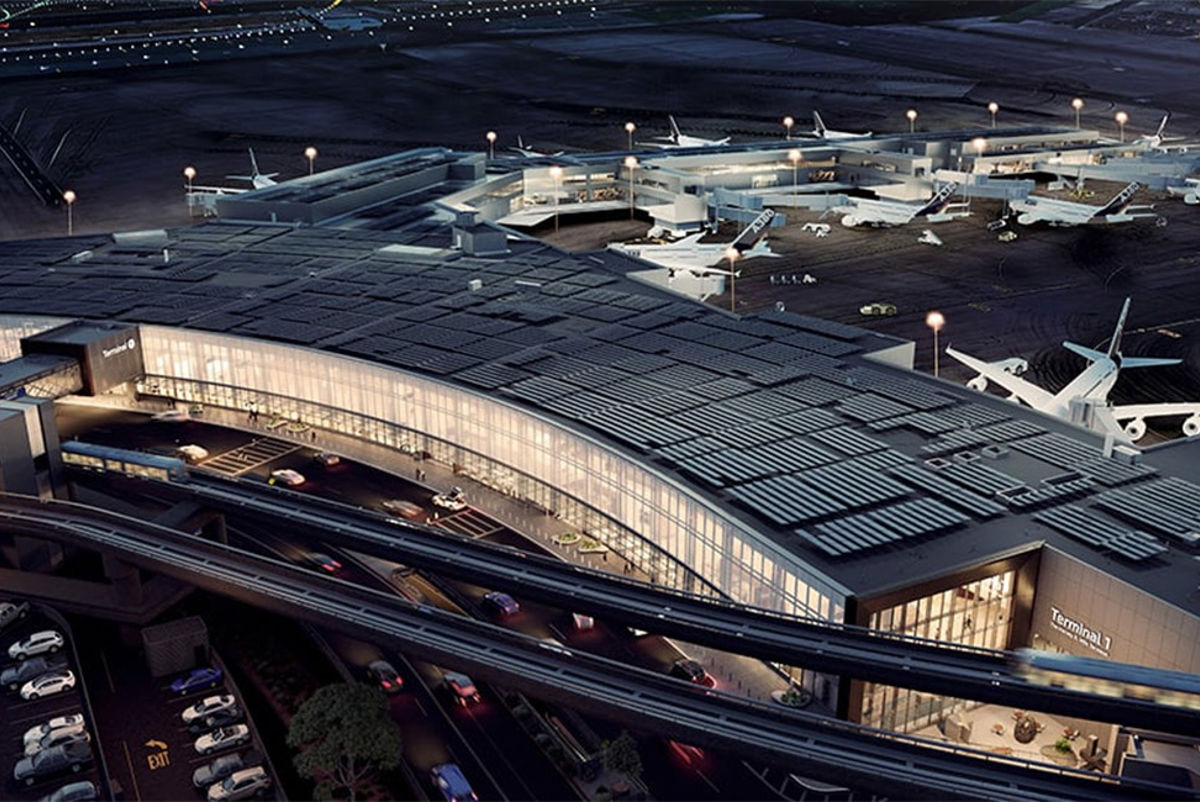
"Stress-testing" the design with WeatherShift
As the airport is a piece of critical infrastructure located adjacent to the San Francisco Bay, we conducted a resiliency assessment of the project’s airside drainage infrastructure for a range of projected future climate change scenarios. We employed the WeatherShiftTM tool to test the robustness of the drainage design, using climate change models that predict rainfall intensity increases of 10% to 25% by 2090.
This “stress-test” informed design adjustments that increase the system’s resilience under the higher-intensity storms that are predicted to occur in the future. Most of the drainage system is capable of handling the increased rainfall intensity, but an isolated susceptible "weak link" in the system was upsized from 18in to 24in to provide suitable additional resilience. The cost of the improvement to provide additional resilience was nominal (less than $5,000), which represented exceptional value in comparison to the potential costs of future operational and maintenance impacts.
Austin-Webcor joint venture / HKS-Woods Bagot-ED2-KYA joint venture
What we delivered
-
Supported the deliver of the world's first airport terminal to earn LEED v4/4.1 BD+C New Construction Platinum certification.
-
Working closely with the design-build contractor, we developed a phased approach to ensure that the terminal could maintain aircraft operations during construction.
-
In a first for the building industry, we obtained an Environmental Product Declaration (EPD) and a Health Product Declaration (HPD) for the passenger boarding bridges.
Get in touch with our team
Read more about this project in the Arup Journal
Learn more about our work on SFO, landmark refurbishment projects in Hong Kong and the Netherlands, as well as the role Arup played in the design of The Christie Proton Beam Therapy Centre.
Projects
Explore more aviation projects:

Helping London Gatwick assess carbon emissions to drive sustainable aviation
Carbon emissions study for London Gatwick, United Kingdom

Redefining Japan’s future airport city
Narita Airport City, Japan
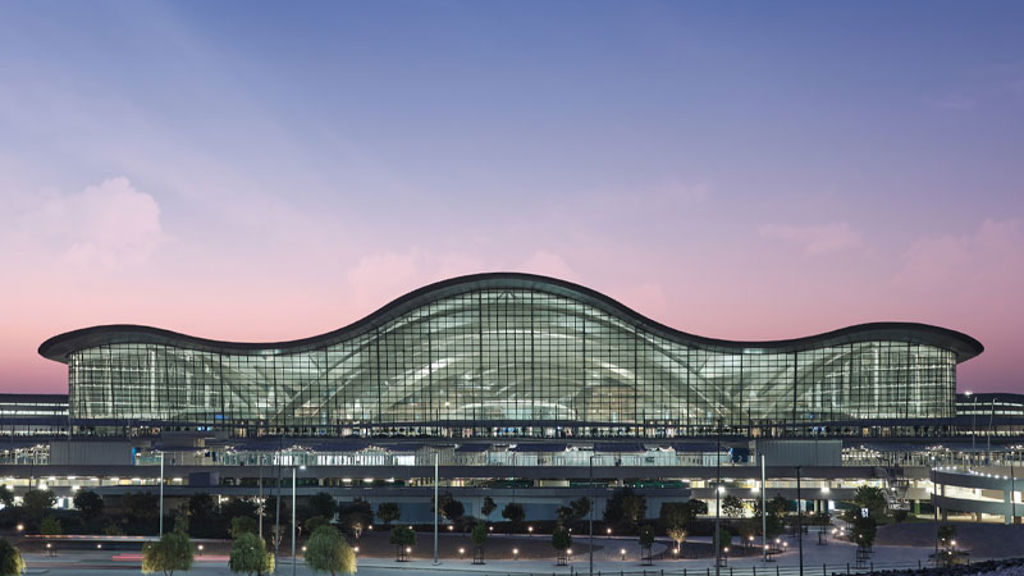
Transforming the travel experience at Zayed International Airport
Zayed International Airport Terminal A, United Arab Emirates

Crafting a New York–inspired atmosphere for passengers traveling through JFK’s global gateway to the world
JFK New Terminal One Art, Branding, and Digital Experience Program, United States of America
Get in touch with us
If you'd like to speak to one of our aviation experts about any of the issues raised on this page or a potential collaboration then please get in touch by completing the form.
